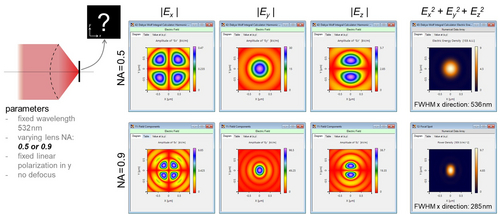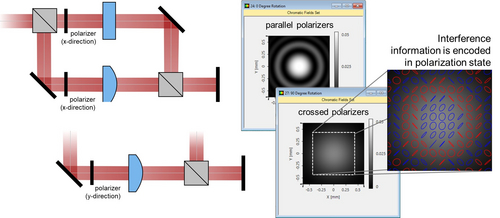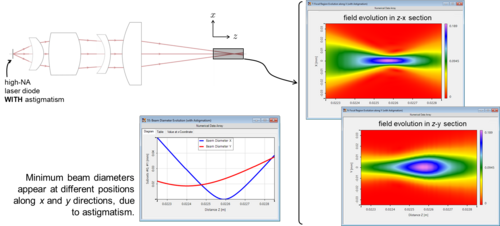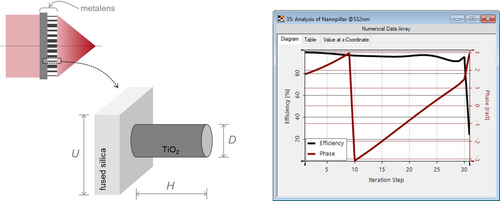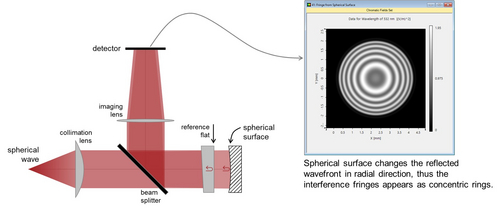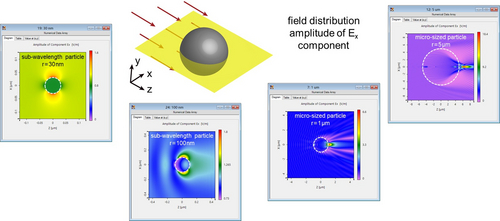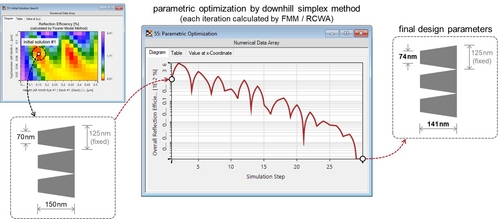What’s new?
Debye-Wolf Integral
It is established that vectorial effects are non-negligible in high-NA imaging systems, like microscopes. The lens surface and material specifications must, technically, be known in order to take the exact vectorial effects into account. However, such detailed information of most commercial objective lenses is not freely available in general. For such situations, you have the Debye-Wolf integral calculator as one possible way out – it is a well-known idealized model for lens systems which is not restricted to paraxial cases, as it includes the most relevant vectorial effects from high-NA objective lenses.
Read moreGeneration of Spatially Varying Polarization
One of the most attractive capabilities of VirtualLab Fusion is the fully vectorial simulation of multidisciplinary optical systems. As an example, we take a Mach-Zehnder interferometer, which consists of beam splitters, mirrors and lenses, as the basic setup; insert polarizers in both arms of the interferometer and, by rotating the polarizer(s), we generate spatially varying polarization states. And since we are talking about polarizers, we would also like to mention that VirtualLab Fusion provides a non-paraxial model thereof which goes beyond the Jones matrix approach.
Read moreFocal Region and Fiber Coupling Tolerance
Detailed analysis and design of an optical system for coupling light into a single-mode fiber rely on the accurate calculation of the field in the focal region. In VirtualLab Fusion, the electromagnetic field information can be calculated on an arbitrary plane of interest, as well as within a longitudinal region, e.g. the focal region. This forms a solid basis for the subsequent calculation of fiber coupling efficiency. The flexible focal region analysis further enables tolerance analysis for such coupling systems with respect to misalignment of the optical components.
Read moreMetasurface Building Blocks
Metalenses and metasurfaces have risen to scientific fame by virtue of their unique properties for manipulation of electromagnetic fields. Thanks to recent advances in nanofabrication technologies, their manufacture has also become feasible. A key step in the design of metasurfaces is finding the appropriate building blocks that make up the surface. With the Fourier modal method (FMM, also known as RCWA) in VirtualLab Fusion, one can perform a rigorous analysis of such nanostructures, with access to the full electromagnetic information. As an example, the performance of nanopillars with varying diameters is evaluated.
Read moreInterferometric Optical Testing
Optical interferometric setups are widely used for precise surface or wavefront testing and detailed analysis. Especially Fizeau interferometers are having pride of place as one of the most widely applied techniques for surface profile testing in the industry. We construct a testing optical system based on Fizeau interferometer in VirtualLab Fusion using several types of surfaces as test objects, and observe different interference fringes. Furthermore, a Mach-Zehnder interferometer for lens testing is presented as well.
Read moreMie Solution for Scattering with a Spherical Particle
Scattering of light is one of the most fundamental effects in optics. For those cases with scattering particles whose size is comparable to the wavelength of the light, e.g., liquid droplets or gaseous contaminants in the air, an exact treatment is required to produce an accurate enough model. The Mie solution, also known as the Lorenz-Mie solution, or Mie scattering, has been enabled in VirtualLab Fusion for the investigation of the scattering properties of a spherical particle. As an example, scattering by a particle made of either a dielectric or a metallic material is simulated, and both situations are then compared.
Read moreAnti-Reflective Moth-Eye Structures
Inspired by certain moth and butterfly species, biomimetic moth-eye anti-reflection (AR) structures have been fabricated and used for a wide range of applications. Such structures can be modeled by assuming arrays of truncated cones with dimensions smaller than the wavelength of the light. VirtualLab Fusion provides convenient tools for constructing them, and the rigorous Fourier modal method (FMM) for their analysis. A typical workflow on the analysis and optimization of moth-eye structures is demonstrated.
Read more



